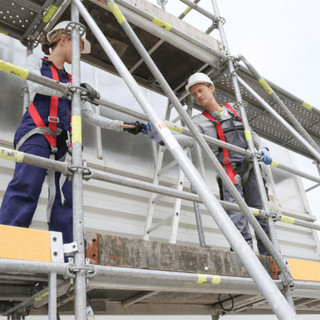Beyond Compliance Redefining Safety with Advanced Risk Assessment
In the dynamic landscape of industries and technological advancements, the traditional approach to safety, often centered around compliance with regulations, is proving insufficient. As the stakes continue to rise, there is a growing imperative to redefine safety through advanced risk assessment methodologies. Beyond mere adherence to established norms, progressive organizations are embracing a proactive and holistic approach that goes beyond compliance, acknowledging that true safety is a multifaceted concept. The traditional compliance-based safety model has undoubtedly played a crucial role in establishing baseline standards and preventing catastrophic events. However, it inherently carries limitations, primarily focusing on meeting minimum requirements rather than anticipating and mitigating emerging risks. In an era where unprecedented challenges such as climate change, cyber threats, and global pandemics loom large, a more comprehensive risk assessment framework becomes imperative.

Advanced risk assessment transcends the checklist mentality, incorporating cutting-edge technologies like artificial intelligence, machine learning, and predictive analytics. These tools empower organizations to not only identify potential hazards but also to predict and prevent incidents before they occur. Machine learning algorithms, for instance, Safety Awareness Posters can analyze vast datasets to identify patterns and correlations that may elude traditional risk assessments. This forward-looking approach allows companies to stay ahead of the curve, adapting to changing circumstances and proactively fortifying their safety measures. Furthermore, advanced risk assessment fosters a culture of continuous improvement, shifting the safety paradigm from a static set of rules to a dynamic and adaptive system. By harnessing real-time data and feedback loops, organizations can constantly refine their risk models, learning from near misses and incidents to enhance overall safety. This iterative process cultivates a mindset where safety is not merely a compliance-driven obligation but a shared responsibility embraced by every member of the organization.
In the context of advanced risk assessment, collaboration becomes a linchpin for success. Breaking down silos between departments and encouraging cross-functional cooperation enables a more comprehensive understanding of potential risks. This collaborative approach extends beyond organizational boundaries, involving industry-wide partnerships and information sharing. By collectively addressing challenges and sharing best practices, industries can create a networked ecosystem where the sum is greater than its parts, establishing a resilient safety infrastructure. Another crucial aspect of redefining safety lies in the integration of human factors into risk assessments. Recognizing that human error is a significant contributor to incidents, advanced risk assessment methodologies consider not only the technical aspects but also the behavioral and cognitive dimensions. By understanding how individuals interact with technology and processes, organizations can design interventions that enhance human performance and reduce the likelihood of errors.
